Cosmetic Dermatology
Cure from all type of Cosmetic Dermatology
Hydra Facial
HydraFacial is a non-invasive skin treatment that uses patented technology to cleanse, exfoliate, extract impurities, and hydrate the skin. It involves several steps:

- Cleansing and exfoliation: Dead skin cells are removed from the surface of the skin using a gentle exfoliating serum.
- Acid peel: A gentle acid peel solution is applied to the skin to loosen dirt and debris from pores without causing irritation.
- Extraction: A specialized vacuum suction device is used to remove impurities and unclog pores, such as blackheads and whiteheads.
- Hydration: Antioxidants and hyaluronic acid are infused into the skin to nourish and hydrate, leaving it plump and refreshed.
- Protection: A final application of moisturizer and sunscreen helps protect the skin from environmental damage.
HydraFacial is suitable for all skin types and addresses various skin concerns, including dullness, dryness, fine lines, wrinkles, acne, and hyperpigmentation. It is typically painless and requires no downtime, making it a popular choice for those seeking a quick and effective skin rejuvenation treatment. However, results may vary depending on individual skin conditions, and multiple sessions may be recommended for optimal outcomes.
Medi Facial
A medi-facial, short for medical facial, is a cosmetic treatment performed by trained skincare professionals, often in medical spas or dermatology clinics, aimed at improving skin health and appearance. Unlike traditional facials offered in spas, medi-facials typically involve the use of medical-grade products and may incorporate advanced techniques and technology.
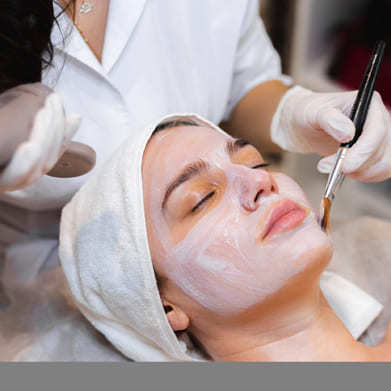
Key components of a medi-facial may include:
- Skin Assessment: The session usually begins with a thorough assessment of the skin's condition, including factors such as texture, tone, hydration levels, and any specific concerns or conditions.
- Cleansing and Exfoliation: The skin is cleansed to remove surface impurities and makeup, followed by exfoliation to slough off dead skin cells and promote cell turnover. This step can help unclog pores and improve the skin's texture.
- Extractions: If necessary, manual extractions may be performed to remove blackheads, whiteheads, and other pore-clogging debris. This step is typically done with sterile tools to minimize the risk of infection.
- Customized Treatments: Depending on the individual's skin concerns, various treatments may be incorporated into the medi-facial. These may include:
- Chemical Peels: Solutions containing exfoliating agents are applied to the skin to improve its texture, reduce fine lines and wrinkles, and address pigmentation issues.
- Microdermabrasion: A mechanical exfoliation technique that uses a device to gently remove the outer layer of dead skin cells, revealing smoother, more radiant skin underneath.
- Hydration Therapy: Serums, masks, or moisturizers containing potent hydrating ingredients like hyaluronic acid may be applied to replenish moisture and improve skin elasticity.
- LED Therapy: Light-emitting diode (LED) devices may be used to target specific skin concerns such as acne, inflammation, or signs of aging.
- Microcurrent Therapy: Low-level electrical currents are applied to the skin to stimulate facial muscles, promote collagen production, and improve skin firmness.
- Sun Protection: A broad-spectrum sunscreen is often applied at the end of the treatment to protect the skin from harmful UV rays, which can exacerbate skin damage and premature aging.
Overall, medi-facials are tailored to address specific skin concerns and provide more noticeable results compared to traditional facials. However, it's essential to consult with a qualified skincare professional to determine the most suitable treatment plan based on your skin type, concerns, and goals. Additionally, maintaining a consistent skincare routine and protecting your skin from environmental aggressors are crucial for long-term skin health.
Carbon Facial
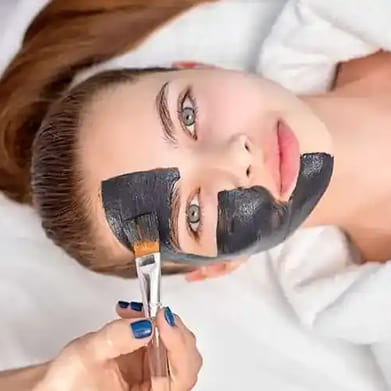
Carbon facial, also known as carbon laser skin rejuvenation or carbon peel, is a non-invasive cosmetic procedure that utilizes a carbon-based solution and a laser to improve the appearance of the skin. Here's everything you need to know about it:
Benefits:
- Deep Cleansing: The carbon particles act as a magnet for dirt, oil, and dead skin cells, providing a deep cleansing effect.
- Skin Rejuvenation: The heat from the laser stimulates collagen production, which helps in reducing fine lines, wrinkles, and improving overall skin texture.
- Acne Treatment: Carbon facial is also effective in treating acne by reducing oil production, killing acne-causing bacteria, and unclogging pores.
- Even Skin Tone: It can help reduce the appearance of pigmentation, sunspots, and uneven skin tone.
- Minimal Downtime: Carbon facial is a gentle procedure with minimal downtime. Some redness or mild swelling may occur immediately after the treatment, but it usually subsides quickly.
Overall, carbon facial is a safe and effective procedure for improving skin health, addressing various concerns, and achieving a more radiant complexion. However, like any cosmetic procedure, it's essential to undergo treatment from a reputable provider to ensure safety and optimal results.
Chemical Peeling
A chemical peel is a cosmetic procedure in which a chemical solution is applied to the skin to exfoliate and remove dead skin cells, resulting in improved skin texture, tone, and appearance. There are three main types of chemical peels:
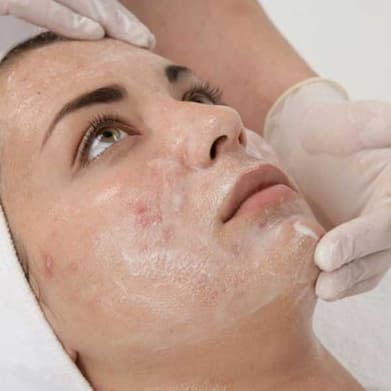
Before undergoing a chemical peel, a consultation with a dermatologist or licensed skincare professional is essential to determine the most appropriate peel for your skin type and concerns. During the procedure, the chemical solution is applied to the skin and left on for a specific amount of time before being neutralized or removed. Patients may experience a stinging or burning sensation during the peel, which subsides once the solution is removed.
After the procedure, it's crucial to follow post-peel care instructions provided by the skincare professional. This typically involves gentle cleansing, moisturizing, and protecting the skin from sun exposure. It's essential to avoid picking or scratching at the treated area to prevent scarring and complications.
Chemical peels can provide noticeable improvements in skin texture, tone, and appearance, but multiple treatments may be necessary to achieve desired results. It's important to discuss expectations and potential risks with a qualified professional before undergoing a chemical peel.
Vampire Facial
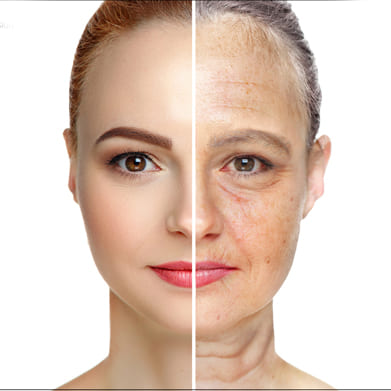
Definition: A vampire facial, also known as platelet-rich plasma (PRP) therapy, is a cosmetic procedure that involves using a patient's own blood to rejuvenate the skin.
Benefits:
- Skin Rejuvenation: Stimulates collagen production and improves skin texture, tone, and elasticity.
- Reduced Wrinkles: Can help reduce the appearance of fine lines and wrinkles.
- Scar Reduction: May improve the appearance of acne scars and other types of scars.
- Even Skin Tone: Helps to even out skin tone and reduce hyperpigmentation.
- Natural Results: Uses the patient's own blood, minimizing the risk of allergic reactions or adverse effects.
Side Effects:
- Temporary Redness: Mild redness and swelling may occur immediately after the procedure, but usually subside within a few days.
- Bruising: Some patients may experience bruising at the injection sites.
- Sensitivity: Skin may be more sensitive to sunlight temporarily following the procedure.
- Infection: While rare, there is a small risk of infection at the injection sites if proper sterilization procedures are not followed.
Suitability: Vampire facials are generally suitable for most skin types, but individuals with certain medical conditions or skin sensitivities should consult with a dermatologist or qualified practitioner before undergoing the procedure.
Skin Polishing
Skin polishing, also known as microdermabrasion or dermalinfusion, is a cosmetic procedure aimed at rejuvenating the skin's appearance by removing dead skin cells and stimulating the production of new, healthier skin cells. Here's everything you need to know about it:
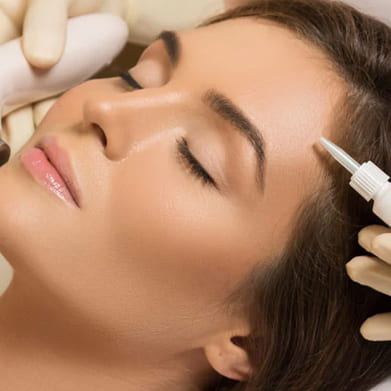
Procedure: During skin polishing, a dermatologist or trained esthetician uses a specialized device that emits fine crystals or a diamond-tipped wand to exfoliate the outermost layer of the skin. This gentle abrasion helps to remove dead skin cells, dirt, and debris from the skin's surface.
Benefits:
- Exfoliation: Removes dead skin cells, promoting cell turnover and revealing smoother, brighter skin.
- Improves Skin Texture: Helps to soften rough skin texture, reducing the appearance of fine lines, wrinkles, and acne scars.
- Enhances Skin Tone: Evens out skin tone by reducing hyperpigmentation, sun damage, and age spots.
- Stimulates Collagen Production: The mechanical exfoliation stimulates collagen production, leading to firmer, more youthful-looking skin.
- Enhances Product Absorption: By removing the outer layer of dead skin cells, skin polishing enhances the penetration and effectiveness of skincare products applied afterward.
Types of Skin Polishing:
- Crystal Microdermabrasion: Uses a handheld device that sprays fine crystals onto the skin and then vacuums them away along with the exfoliated skin cells.
- Diamond-tip Microdermabrasion: Involves a diamond-tipped wand that is gently moved across the skin to exfoliate and suction away dead skin cells.
- Hydradermabrasion or Dermalinfusion: Combines exfoliation with the infusion of serums containing hydrating and nourishing ingredients, providing additional benefits beyond traditional microdermabrasion.
Overall, skin polishing can be an effective non-invasive procedure to improve skin texture, tone, and overall appearance when performed by a qualified professional.
Mesotherapy
Mesotherapy is a minimally invasive cosmetic procedure that involves injecting small amounts of various substances, such as vitamins, minerals, amino acids, and medications, into the middle layer of the skin (mesoderm) to treat a variety of conditions including cellulite, wrinkles, sagging skin, and hair loss. The technique is believed to work by delivering nutrients directly to the target area, stimulating collagen production, improving circulation, and promoting fat breakdown. Mesotherapy is typically performed in multiple sessions spaced several weeks apart and is generally considered safe when administered by a trained and experienced medical professional. However, potential side effects may include temporary bruising, swelling, redness, or allergic reactions at the injection site. As with any cosmetic procedure, it's essential to consult with a qualified healthcare provider to determine if mesotherapy is suitable for your individual needs and health status.